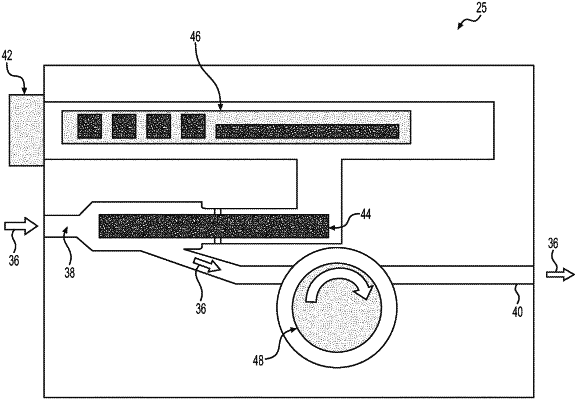| CPC E21B 43/12 (2013.01) [E21B 34/066 (2013.01); E21B 34/08 (2013.01); E21B 34/16 (2013.01); E21B 41/0085 (2013.01); E21B 43/08 (2013.01); E21B 47/06 (2013.01); E21B 49/08 (2013.01); E21B 47/18 (2013.01)] | 12 Claims |

|
12. A method of variably controlling flow resistance in a well, the method comprising:
receiving a flow of a fluid in a first direction when producing the fluid from the well into a first flow path of a variable flow resistance system installed in the well;
measuring properties of the fluid received into the first flow path with sensors, wherein the measured properties comprise a fluid flow rate and a fluid viscosity;
receiving a communication signal from the surface indicating one of a plurality of production phases of the well, the plurality of production phases comprising a preliminary phase, an intermediate phase, or a final phase; and
adjusting a flow rate of the fluid received into the first flow path using a controller of the variable flow resistance system based upon a comparison of at least one of the properties of the fluid measured by the sensors and predetermined values of the properties and the production phase of the well, wherein adjusting the flow rate comprises axially moving an actuator in the direction of fluid flow into the first flow path;
wherein adjusting the flow rate further comprises increasing resistance to flow responsive to determining that the measured fluid flow rate increases beyond a first predetermined level or the measured fluid viscosity decreases below a second predetermined level.
|